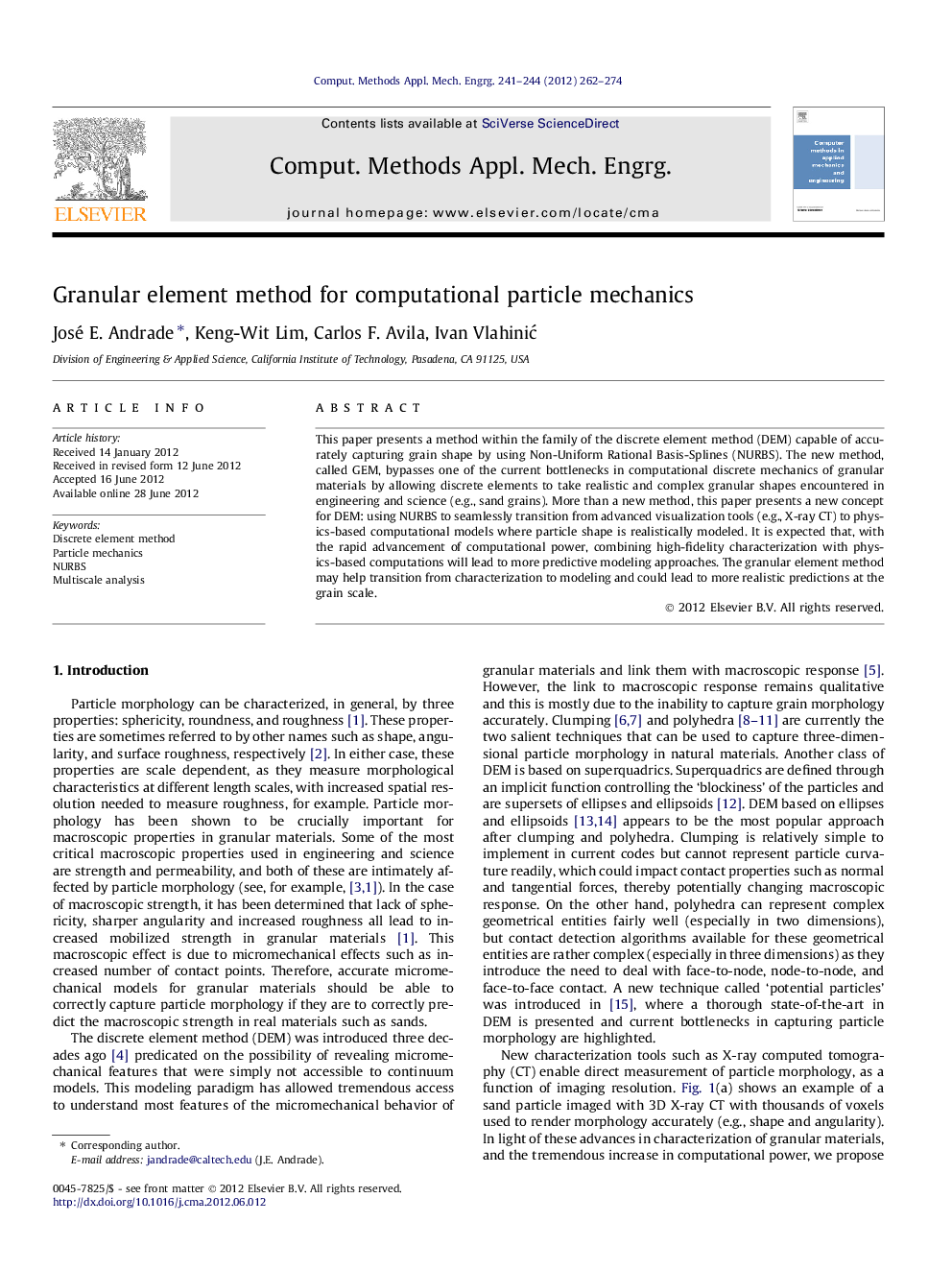| Article ID | Journal | Published Year | Pages | File Type |
|---|---|---|---|---|
| 498334 | Computer Methods in Applied Mechanics and Engineering | 2012 | 13 Pages |
This paper presents a method within the family of the discrete element method (DEM) capable of accurately capturing grain shape by using Non-Uniform Rational Basis-Splines (NURBS). The new method, called GEM, bypasses one of the current bottlenecks in computational discrete mechanics of granular materials by allowing discrete elements to take realistic and complex granular shapes encountered in engineering and science (e.g., sand grains). More than a new method, this paper presents a new concept for DEM: using NURBS to seamlessly transition from advanced visualization tools (e.g., X-ray CT) to physics-based computational models where particle shape is realistically modeled. It is expected that, with the rapid advancement of computational power, combining high-fidelity characterization with physics-based computations will lead to more predictive modeling approaches. The granular element method may help transition from characterization to modeling and could lead to more realistic predictions at the grain scale.
► We develop a new computational method called granular element method (GEM). ► GEM uses Newtonian mechanics as previous discrete methods (DEM) but can capture particle morphology using NURBS. ► GEM is a new concept: allowing seamless transition from X-ray CT to simulations in particulate systems. ► We show that particle morphology, as captured by GEM, affects macroscopic properties such as strength in particle materials. ► GEM may lead to new physics-based constitutive and multiscale models.
